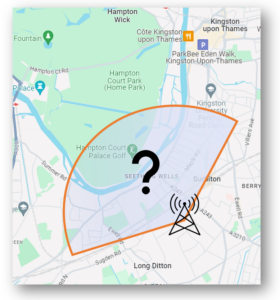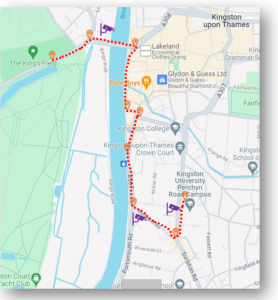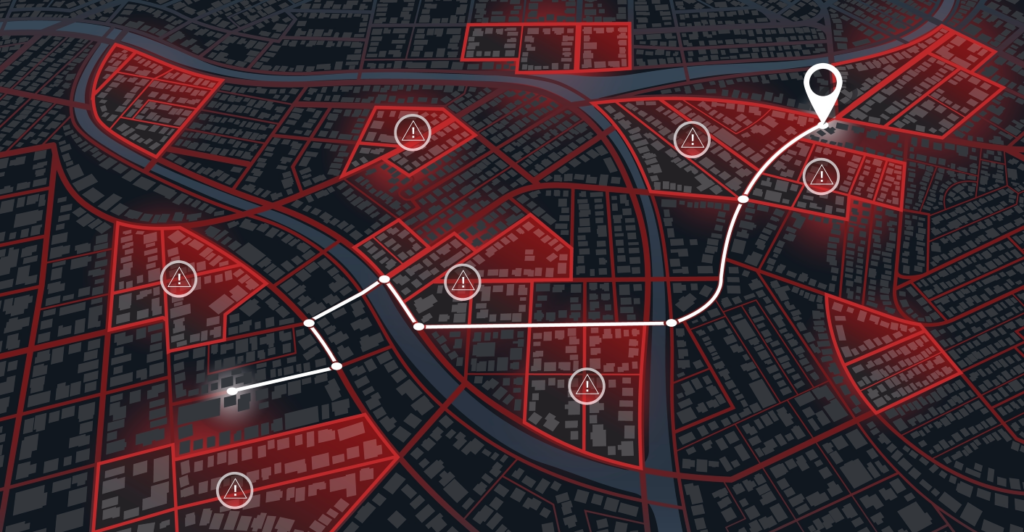The shifting landscape of electronic communication complicates lawful intelligence with unprecedented high volumes of digital traffic, obscured by encryption, across a massive diversity of social media and other channels. Law enforcement agencies (LEAs) must continue to adapt by evolving their methods and techniques to focus beyond communication payloads—which are no longer visible—to gain insights from the digital breadcrumbs that remain. This approach requires significant forensic and analytical work to transform those scraps of information into insights that can advance investigations.
SS8 is driving new generations of lawful and location intelligence technologies to accelerate investigations in this new paradigm and save time and lives. For example, recursive identity lookup pulls together metadata from the communication stream, open source intelligence, and other resources to identify individuals of interest. Deep packet inspection and heuristic analysis build on the detected contents of packet headers to reveal what application is being used, when, and for how long. SS8 location intelligence finds the position of devices using a variety of handset and network techniques, to track subject movements and patterns of life, among other insights.
Increasing the accuracy of current and historical location information that can be gathered about a subject of interest is a critical capability for LEAs. The ability to locate targets more precisely is the foundation for a range of investigative techniques that reach beyond just where a subject is, to reveal information and evidence about what they are doing and who they are doing it with. SS8 is working with LEAs all over the world to drive the full potential value from location intelligence, for improved visibility into criminal activity.
Overcoming the Shortcomings of Basic Location Accuracy

Traditional location services rely on information provided by the handset, which creates significant limitations for investigators. While GPS can provide highly accurate location data, the service is highly unreliable as an intelligence source. GPS can be disabled by the user, its line-of-sight requirement from the handset to a satellite makes it problematic in many geographies, and it is so power-intensive that the mobile OS will attempt to block its use where possible.
In the absence of GPS data, LEAs have traditionally had to fall back on less-accurate location information. Typically, they have relied on call data records (CDRs) or real-time requests that are both limited to Cell-ID granularity. In a dense urban environment, this accuracy locates the device within 500 meters, or 20 kilometers or more in remote rural areas. The lack of granularity hampers investigations, forcing investigators to consider large areas that obscure details and compromise efficiency.
SS8 overcomes that lack of visibility with network-based high-accuracy location services. This approach starts with the Cell-ID the handset is attached to, then refines location by analyzing geographical intersections between that cell and neighboring ones also in range of the handset. Based on that area of intersection as well as transmission timing information, the SS8 platform can increase location tenfold or more, to perhaps 50 meters in an urban setting or 500 meters in a rural one. Investigators are directed to more precise areas, LEAs improve resource efficiency, and cases can be pursued more effectively.
Realizing the Full Potential of High-Accuracy Location
Better location intelligence is the keystone for LEAs to adopt advanced investigative techniques. Looking ahead, as mobile network operators (MNOs) deploy 5G next-generation radio access networks (NG-RANs), 3GPP standards will drive up accuracy by an additional 10x, with smaller cells and beamforming antennas that zero in on spatial areas of just a few degrees radiating from the cell tower. Beginning immediately, high-accuracy location advances the following use cases:

- Historical and real-time location query displays the location of one or more devices at present and over the past 90 days, displaying their movements on a map over time.
- Missing persons investigation benefit greatly from high-accuracy location, especially in rural and remote areas.
- Geo-fencing and area investigation lets investigators draw precise geographical shapes on a map and monitor all subscribers in each area during defined time periods.
- Relationship analysis identifies meetings and tracks travel by subjects of interest in a specific area, helps identify additional subjects, and alerts investigators to pre-defined proximity events.
- SIM swap detection can alert investigators to frequent SIM changes on handsets that can indicate identity hiding, as well as the existence of criminal SIM factories.
- Locating and detecting dark devices which accompany criminals.
- Roamer detection identifies the presence of roaming subscribers (including those from specific countries at specific times) in a geofenced area for monitoring as well as border control.
With more than 20 years of experience in lawful intelligence, SS8 offers the latest location intelligence services for these and other emerging use cases. SS8 LocationWise enables centralized deployment and control from the LEA data center over data that originates from multiple MNOs, deployed on the choice of bare-metal servers, virtual machines, or public cloud infrastructure. Better location services help shift the advantage to LEAs in today’s complex, encrypted networks.
About Stuart Walsh
 Stuart Walsh is a consultative technical sales leader with over 30 years of experience helping customers deliver solutions for success. As a technical leader in the Location division of SS8 Networks, Stuart is passionate about introducing next generation solutions and services to network operators and enterprises and driving business growth. Stuart also has a depth of experience in voice and data applications for both Enterprise and Service Provider customers. You can learn more about Stuart on his LinkedIn profile here.
Stuart Walsh is a consultative technical sales leader with over 30 years of experience helping customers deliver solutions for success. As a technical leader in the Location division of SS8 Networks, Stuart is passionate about introducing next generation solutions and services to network operators and enterprises and driving business growth. Stuart also has a depth of experience in voice and data applications for both Enterprise and Service Provider customers. You can learn more about Stuart on his LinkedIn profile here.
About SS8 Networks
As a leader in Lawful and Location Intelligence, SS8 helps make societies safer. Our commitment is to extract, analyze, and visualize the critical intelligence that gives law enforcement, intelligence agencies, and emergency services the real-time insights that help save lives. Our high performance, flexible, and future-proof solutions also enable mobile network operators to achieve regulatory compliance with minimum disruption, time, and cost. SS8 is trusted by the largest government agencies, communications providers, and systems integrators globally.
Intellego® XT monitoring and data analytics portfolio is optimized for Law Enforcement Agencies to capture, analyze, and visualize complex data sets for real-time investigative intelligence.
LocationWise delivers the highest audited network location accuracy worldwide, providing active and passive location intelligence for emergency services, law enforcement, and mobile network operators.
Xcipio® mediation platform meets the demands of lawful intercept in any network type and provides the ability to transcode (convert) between lawful intercept handover versions and standard families.
To learn more, contact us at info@ss8.com.


